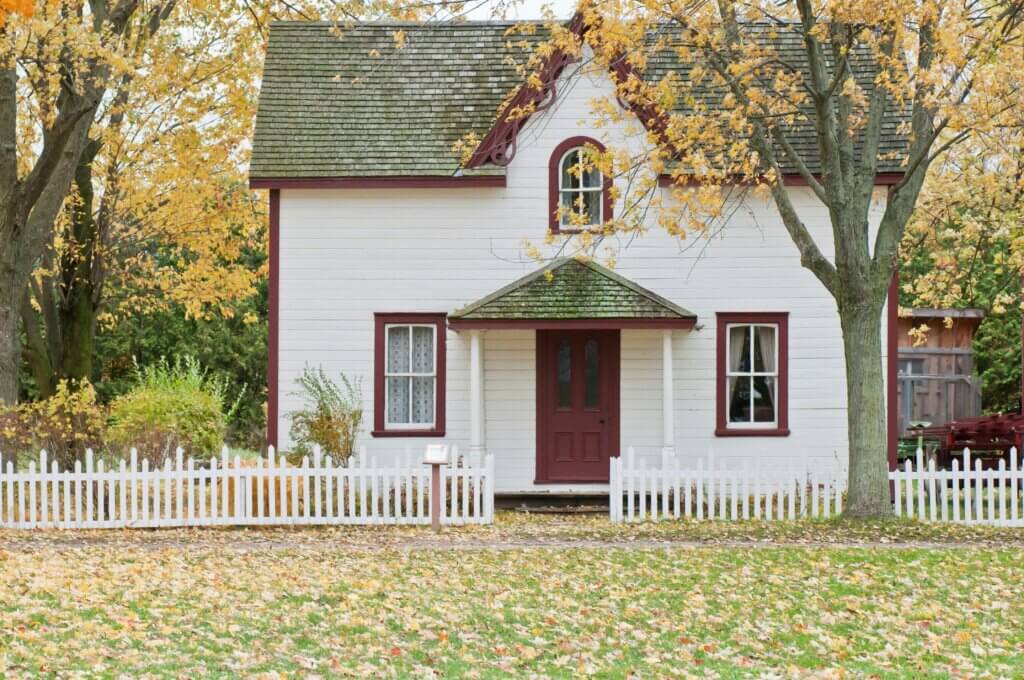Your mom calls one evening, and you can hear the worry in her voice.
She’s retired and still living in the home she and your dad worked hard to pay off. But with everyday costs rising and a fixed income, she’s concerned about making ends meet.
She mentions an ad she saw on TV for a reverse mortgage and wants your opinion on whether she should consider it to help boost your parents’ retirement income.
You want to help. But where do you even start?
This article is for you—the adult child, grandchild, or trusted supporter—who’s stepping in to help a loved one navigate their financial options.
While you might not need a reverse mortgage yourself (yet), understanding how it works can make you a more confident guide today and a more informed decision-maker tomorrow.
So what is a reverse mortgage?
Don’t worry; you don’t need to be an expert. We’ll cover what a reverse mortgage is, how it works, who qualifies, the pros and cons, and how to know if it’s the right move for your family.
What Is a Reverse Mortgage?
Your parents probably started their financial journey the same way many do—by buying a home with a traditional mortgage. They made monthly payments for years, slowly building equity and eventually maybe even owning their home outright.
Now, that same home can help support them in retirement, through something called a reverse mortgage.
What is a reverse mortgage? It’s a special type of home loan for older homeowners that lets them convert part of their home’s value into cash while continuing to live there.
In other words, a reverse mortgage has the potential to turn decades of homeownership into a financial cushion for retirement.
That’s a big deal, especially since nearly 80% of retirees own their homes. Often, it’s their largest financial asset—sometimes worth more than their retirement savings.
Think of a traditional vs reverse mortgage like this: with a traditional mortgage, the homeowner pays the bank. With a reverse mortgage, the bank pays the homeowner, drawing from the equity they’ve built over time.
Home equity is the difference between what the home is worth and the balance still owed on the mortgage. In many cases, that equity has grown significantly over decades of ownership. In fact, the median home equity for senior homeowners (65 and over) is $250,000.
A reverse mortgage offers a way to tap into that value. It provides extra income and flexibility without having to pay a mortgage every month, helping seniors “age in place” and maintain their independence, even as costs rise.
Traditional vs. Reverse Mortgage
With a traditional mortgage, you borrow money to buy a home and pay it back over time. As you make payments, you build up equity, or ownership, in your home.
A reverse mortgage works the opposite way.
Instead of you paying the bank, the bank pays you. The loan is still backed by your home, but you don’t have to make monthly payments. The loan is usually paid back later, when the homeowner moves out or passes away.
Most homeowners use reverse mortgages to cover essential needs, like paying off a mortgage, handling medical bills, or supplementing retirement income—not for extras like vacations or luxury purchases.
It’s also important to keep in mind that a reverse mortgage isn’t free money. It’s a loan that has to be repaid, and interest adds up over time. The more a homeowner borrows, the less equity they or their heirs may have in the home later on.
How Does a Reverse Mortgage Work?
A reverse mortgage might sound complex, but the core idea is pretty simple. It lets homeowners tap into their home equity to get extra cash, all while staying in the place they call home.
Let’s walk through how it works.
Eligibility Requirements and Key Considerations
Not everyone qualifies for a reverse mortgage. Here are the basics:
- Age: You must be at least 62 years old. If you’re applying with a spouse, both of you must meet this age requirement.
- Primary residence: The home must be your main residence. Second homes and investment properties don’t qualify.
- Home equity: You must own your home outright, or have paid off a significant amount of your original mortgage (usually at least 50%). The amount you can borrow on a reverse mortgage depends on your age, your home’s value, and current interest rates. Generally, the older you are and the more equity you have, the more money you may be eligible to borrow.
- Financial review: Lenders will check that you can keep up with property taxes, homeowners insurance, and basic upkeep.
- Condition of the home: The home must be in good condition, with no major structural issues or safety hazards.
- Counseling requirement: You’ll need to complete a counseling session approved by the U.S. Department of Housing and Urban Development (HUD) to make sure you fully understand the loan and its implications.
While it seems like a lot, most of them are straightforward requirements, and easy to verify.
Payout Options for a Reverse Mortgage
One of the benefits of a reverse mortgage is flexibility in how you receive the funds. Here are the main options:
- Lump sum: Get all the money at once. Good for paying off big expenses or existing debt.
- Line of credit: Access funds as needed. Borrowers can take out money any time until the line of credit is depleted. Most people choose this option when taking out a reverse mortgage.
- Monthly payouts: Receive a steady income each month, either for a set number of years or for as long as you live in the home.
A reverse mortgage also allows for a combination of these options—mix and match as needed. For example, take a smaller lump sum now and keep a line of credit for future needs.
Repaying the Loan
You don’t have to repay a reverse mortgage as long as you live in the home.
The loan becomes due when the last borrower:
- Passes away.
- Sells the home.
- Moves out permanently (usually defined as being away for 12 months or more).
Most people repay a reverse mortgage by selling the home. If the sale brings in more than the loan balance, the extra money goes to the homeowner or their heirs.
But what if the home sells for less than what’s owed? No problem.
Some reverse mortgages, like federally-insured Home Equity Conversion Mortgages (HECMs), include a built-in safeguard called a “non-recourse” feature. This means that when the home is sold, you or your heirs won’t owe more than the home’s value at that time, even if the loan balance is higher.
Some private lenders also offer proprietary reverse mortgages, which are not federally insured and may come with different terms and protections. That’s why it’s important to understand what’s included (and what’s not) before you commit.
When it is included, this built-in protection is one of the reasons reverse mortgages can be appealing in the right situations. Still, they’re not the best fit for everyone.
Understanding the benefits and drawbacks can help you decide whether a reverse mortgage could make sense for your loved one.
The Pros and Cons of a Reverse Mortgage
Reverse mortgages aren’t one-size-fits-all. Understanding how they can help—or complicate—your family’s situation is key to making a smart decision.
Potential Benefits
Reverse mortgages have a few characteristics that make them enticing:
- Access to tax-free cash flow: Because the money is considered a loan, not income, it’s not taxed. That can help stretch retirement savings further.
- Freedom from mortgage payments: Removing that monthly bill can ease pressure on a fixed income and free up funds for healthcare, in-home support, or daily needs.
- Stay in the home you love: As long as the property remains your primary residence and you meet the loan’s terms, you don’t have to sell or move out.
- More financial flexibility: You can use the funds for in-home care, home modifications, or to avoid dipping into other retirement accounts too soon.
- Heirs aren’t stuck with the debt: If the home sells for less than the loan balance, your family won’t have to cover the difference thanks to the non-recourse protection built into most reverse mortgages.
For many families, these features can offer much-needed financial relief and peace of mind during retirement.
Possible Drawbacks
However, it’s essential to be fully aware of what can make reverse mortgages a challenge more than a benefit:
- Less value left for your family: The more money that’s borrowed through the reverse mortgage, the less of the home’s value is left over. That could mean a smaller inheritance for future generations when the home is sold.
- High upfront costs: Origination fees, closing costs, and mortgage insurance premiums can eat into available funds.
- May require significant home equity to qualify: Most borrowers need at least 50% equity, which can limit options for those who still owe a large balance on their mortgage.
- You’re still on the hook for home expenses: You must continue paying property taxes, insurance, and keeping up with maintenance. Falling behind could put the loan at risk.
- Surviving spouses may face uncertainty: If one spouse isn’t listed as a co-borrower on the loan, they might not be able to stay in the home after the other passes.
- Leaving the home can trigger repayment: If the homeowner moves into a nursing facility or is away for too long (i.e., traveling or staying with family), the loan may need to be repaid—sometimes quickly.
- The details can be confusing: Reverse mortgages come with fine print and rules that can be tricky to navigate without expert help.
With so many moving parts, the real question becomes: is a reverse mortgage the right move for your family’s situation?
Is a Reverse Mortgage Right for My Family?
A reverse mortgage can help supplement retirement income, but whether it makes sense depends on your family’s needs, priorities, and long-term plans.
Use these questions to help you determine whether a reverse mortgage is the right move:
- Are your parents or loved ones over 62 and planning to stay in their home long-term? Reverse mortgages are designed for older homeowners who want to age in place.
- Do they have at least 50% equity in the home? Significant home equity is usually required to qualify.
- Would extra monthly income help cover living expenses or eliminate mortgage payments? Having access to additional cash can be a major benefit for those on a fixed income.
- Is the home in good condition and likely to be maintained over time? The homeowner is still responsible for upkeep, taxes, and homeowners insurance.
- Is preserving the home as an inheritance a top priority? Reverse mortgages can reduce or eliminate the equity left to heirs.
- Is your family prepared to help manage the loan and repayment process when the time comes? The loan must be paid back when the homeowner passes or moves out.
- Have you explored other options, like downsizing, a home equity loan, or financial help from family? Sometimes a simpler or more flexible solution is the best one.
Bottom line: if your loved one wants to stay in their home, needs extra income, and has strong equity, a reverse mortgage could be worth exploring. But if they’re unsure about staying put or want to leave the home to family, another option might be a better fit.
Making an Informed Decision Together
A reverse mortgage can be a smart strategy for the right family in the right situation. But it’s not a decision to make lightly.
Start with open, honest conversations about financial goals, concerns, and priorities. And consider bringing in a HUD-approved housing counselor for unbiased guidance tailored to your family’s needs.
Supporting someone you love through an important financial decision is part of building strong family roots. The knowledge you gain now will serve you well in your own planning for the future, too.
Whether you’re helping a parent navigate retirement or preparing for your own future, understanding all your options puts you in a stronger position to choose wisely.
Kudzu is here to support you on that journey.
From savings tools to educational resources, our mission is to help you grow your financial confidence and make informed decisions at every stage of life.
Sign up for our app today and start building the financial roots that will support your family for generations.



